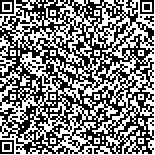| 摘要: |
| 海面盐度(sea surface salinity,SSS)是研究海洋变化及其气候效应重要的物理量,对海洋生态环境、海洋可持续发展至关重要。为了提高海面盐度反演精度,本文通过对SMAP卫星L波段微波辐射计测量的亮温数据进行海面盐度反演研究,考虑风、浪等影响海面粗糙度的环境因子对Klein-Shift模型(简称K-S模型)进行改进,再将反演盐度与Argo盐度进行比对。结果显示改进K-S模型反演盐度与Argo盐度相关系数R=0.99,呈显著相关,且平均偏差BIAS和均方根误差RMSE分别为0.16和0.17,残差基本分布在0.2之内,相比较于K-S模型,反演精度提高了0.5左右。总的来看,改进K-S模型反演盐度与Argo盐度之间偏差较小,反演精度较好,在空间分布上趋于一致,且海面盐度空间变化上具有明显的纬度分布地理特征。 |
| 关键词: 海面盐度 反演方法 改进K-S模型 |
| DOI:10.11759/hykx20200713005 |
| 分类号:TP79 |
| 基金项目:江苏省省测绘地理信息局开放基金项目(JSCHKY201904);水文水资源与水利工程科学国家重点实验室“一带一路”水与可持续发展科技基金面上项目(2018491411);连云港市“海燕计划”人才资助项目(HYJH202021);2020年江苏省研究生实践创新计划项目(SJCX20_1254) |
|
| Inversion method of sea surface salinity based on microwave remote sensing technology |
|
NIU Yuan, QIU Zhi-wei, CHANG Yu-jia, WU Zhen-yu, PAN Chun-tian
|
|
School of Marine Technology and Geomatics, Jiangsu Ocean University, Lianyungang 222005, China
|
| Abstract: |
| Sea surface salinity is an important physical quantity in studying ocean changes and climate effects, which are very significant to the marine ecological environment and the sustainable development of the ocean. To improve the accuracy of the sea surface salinity inversion, the brightness temperature data measured by the SMAP L-band microwave radiometer is used to study the sea surface salinity inversion, and the Klein-Shift (K-S) model is improved by considering environmental factors such as wind and waves that affect the sea surface roughness. Comparing the salinity retrieved by Newton's method with the measured salinity of Argo, results show that the improved K-S model inversion salinity has a significant correlation with the Argo salinity correlation coefficient R=0.99, the average deviation and root mean square error are respectively 0.16 and 0.17, and the residuals are basically distributed within 0.2. For the K-S model, the inversion accuracy is improved by about 0.5. In general, the improved K-S model has a small deviation between the salinity inversion and the Argo salinity, the inversion accuracy is better than the other two, and the spatial distribution tends to be consistent. Moreover, the spatial variation of sea surface salinity has obvious geographic characteristics of latitude distribution. |
| Key words: sea surface salinity inversion method K-S model improvement |
